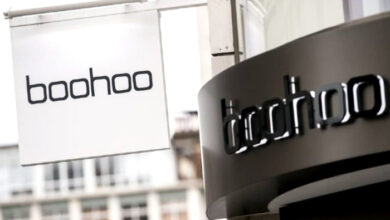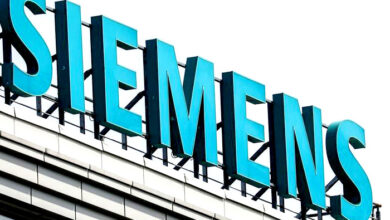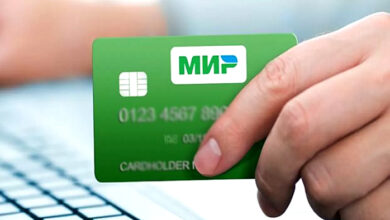Elon Musk’s takeover of Twitter starts with firings and the announcement that the “bird is freed.”

On Thursday, Elon Musk bought Twitter Inc. (NYSE:TWTR). He fired the company’s top executives and didn’t say much about how he plans to achieve the lofty goals he has set for the popular social media site.
“The bird is freed,” he tweeted, referring to Twitter’s bird logo. This seemed to be a hint that he wanted the company to let people post more content.
But the CEO of Tesla (NASDAQ:TSLA) Inc. has also said that he doesn’t want the platform to become a place where hate and division can thrive.
Related: Who wants drinks on Friday after work with Elon Musk, the new owner of Twitter?
Other goals include trying to “beat” spam bots on Twitter and making the algorithms that decide what content users see public.
Still, Musk hasn’t said how he plans to do all of this or who will run the company. He has said that he wants to cut jobs, so about 7,500 people who work at Twitter are worried about their future. He also said on Thursday that he didn’t buy Twitter to make more money, but “to try to help people whom I love.”
People who know about the situation say that Musk fired Twitter’s CEO, Parag Agrawal, its CFO, Ned Segal, and its head of legal affairs and policy, Vijaya Gadde. He had said that they were misleading him and investors in Twitter about the number of fake accounts on the social media site.
Sources say that Agrawal and Segal were at Twitter’s headquarters in San Francisco when the deal closed and were helped to leave.
Twitter, Musk, and the executives didn’t answer our questions right away.
‘CHIEF TWIT’
Before the $44 billion acquisition was finalised, Musk walked into Twitter’s headquarters on Wednesday with a big smile and a porcelain sink in his hands. He then tweeted, “Let that sink in” and changed his Twitter profile to say “Chief Twit.”
He also tried to make sure employees didn’t worry about big layoffs and told advertisers that his past criticism of Twitter’s rules for content moderation wouldn’t hurt the site’s popularity.
Musk said in an open letter to advertisers on Thursday, “Twitter can’t become a free-for-all hellscape where anyone can say anything with no consequences.”
Bollywood actress Kangana Ranaut, who was banned from Twitter last year for breaking its rules against hateful and abusive behaviour, praised Musk’s takeover on Instagram and posted requests from fans to have her account restored. This shows that there are problems to be solved.
Musk also said in May that he would remove the ban that was put on Donald Trump after the attack on the United States. even though the former president of the United States has said he won’t go back to the stage. Instead, he has made Truth Social, his own social media app.
Reuters asked for a comment from a Trump representative, but they didn’t answer right away.
Musk has also said that he thinks Twitter could be the basis for a “super app” that does everything from sending money to shopping to getting rides.
But Twitter is having a hard time keeping its most active users, who are very important to its business, interested. These “heavy tweeters” make up less than 10% of all Twitter users each month, but they send 90% of all tweets and bring in 50% of the world’s revenue.
A SAGA
The deal is the end of a long story with many twists and turns that made people wonder if Musk would finish the deal. It started on April 4, when Musk said that he owned 9.2% of the company. This made him the biggest shareholder.
The richest person in the world then agreed to join Twitter’s board, but at the last minute he changed his mind and instead made an offer to buy the company for $54.20 per share. Twitter wasn’t sure if this was another one of Musk’s cannabis jokes or not.
Musk’s offer was real, and in April, the two sides made a deal at the price he suggested over the course of just one weekend. This happened without Musk doing any due diligence on the company’s confidential information, which is what usually happens when a company is bought.
Musk had second thoughts in the weeks that followed. He said in public that he thought the number of spam accounts on Twitter was much higher than what Twitter said in regulatory filings, which was that less than 5% of its monetizable daily active users were spam accounts. Then, his lawyers said that Twitter didn’t give him the information he asked for about the situation.
On July 8, Musk told Twitter that he was ending their deal because Twitter had lied to him about the bots and wouldn’t work with him. Four days later, Twitter filed a lawsuit against Musk in Delaware, where the company is based, to force him to finish the deal.
By that time, shares of social media companies and the stock market as a whole had dropped because people were worried that the Federal Reserve’s plan to raise interest rates to fight inflation would send the U.S. economy into a recession. Twitter said that Musk was having buyer’s remorse because he wanted out of the deal because he thought he had paid too much.
Related: Elon Musk says that Neuralink’s “show and tell” will be put off by one month.
Most legal experts said that Twitter had the best case and would probably win in court. Even after Twitter’s former security chief, Peiter Zatko, came forward in August as a “whistleblower” to say that the company didn’t tell people about holes in its security and data privacy, their view didn’t change.
On October 4, just before Musk was to be questioned by Twitter’s lawyers before their trial started later that month, he did another about-face and offered to finish the deal as agreed. He was able to do that just one day before the Delaware judge’s deadline of Oct. 28 for him to avoid going to court.
Thursday’s trading in New York ended with Twitter shares up 0.3% at $53.86, which was a little less than the $54.20 per share deal price. The stock will be taken off the New York Stock Exchange on Friday.





